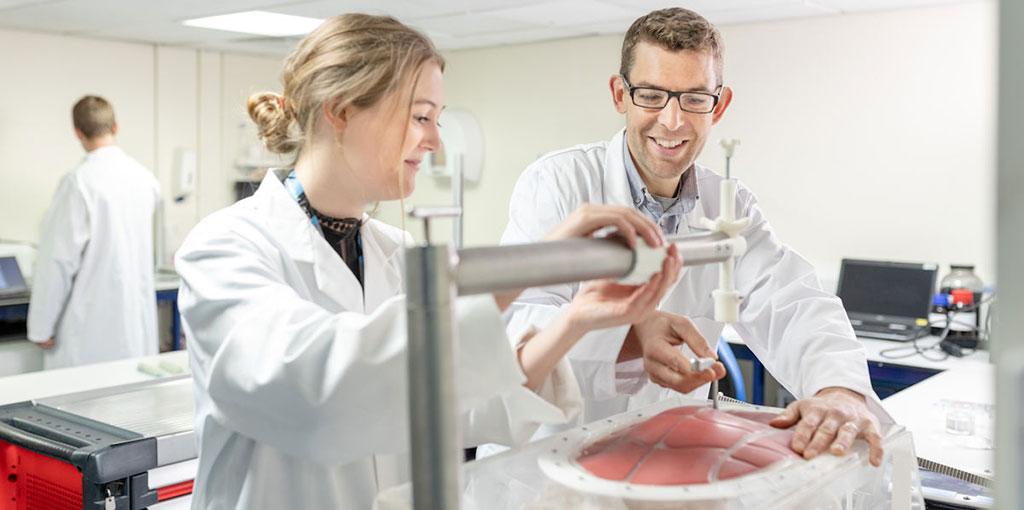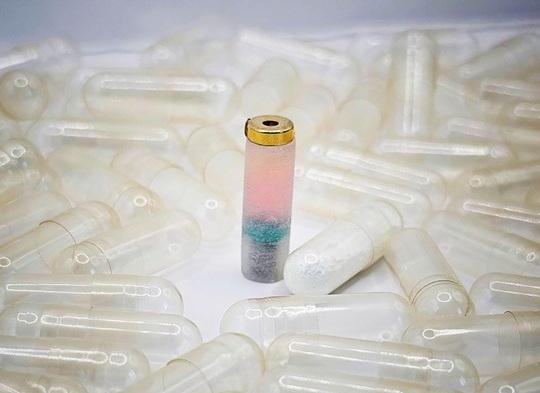Novel Retractor Makes Laparoscopic Surgery Affordable Worldwide
|
By HospiMedica International staff writers Posted on 14 Jun 2022 |

Surgical technology is often developed for well-resourced healthcare systems - and is of little or no use in poorer settings where hospitals lack sophisticated support infrastructure or appropriately trained staff. Without access to medical equipment they can use, hospitals and clinics in low-to-middle income countries cannot offer surgical treatment to nine out of 10 patients. Thus, medical equipment that can be manufactured at low cost, is simple to use and can be easily maintained will help extend surgery to the five billion people worldwide who currently cannot get access to it. An international research team has now designed a simplified surgical tool for performing laparoscopic - or keyhole surgery - in low resource settings. The result is that laparoscopic surgery can now be carried out in clinics and hospitals where it was not possible before.
The surgical tool was created by a research team led by the University of Leeds (West Yorkshire, UK) with a focus on creating medical devices specifically for use in low-to-middle income countries. The team has pioneered a development approach based on “participatory design”, where the users of the technology are closely involved in its design - and where functionality of the device is pared back to key essentials. The simplified design of the surgical tool meant it was easier for the device manufacturer to get regulatory approval, with the time it takes to go from design to approval being four years in this case, as compared to 10 years generally. The surgical tool also meets the guidelines established by the World Health Organization for the design and development of healthcare technology for low to middle income countries. It says they should follow four key principles, the 4As – affordability, accessibility, availability and appropriateness.
During laparoscopic operations, the surgeon inflates the patient’s abdomen with CO2 gas, to create space to see internal organs and to manipulate instruments. That comes with two challenges. It requires operating theatres to have a reliable CO2 gas supply. It also requires the patient’s abdominal muscles to be fully relaxed requiring a general anesthetic and an anesthetist to give it. An alternative approach called gasless laparoscopy has been developed. Rather than pumping CO2 into the abdomen, a mechanical retractor or clamp is used to lift the abdominal wall. With this method, the patient does not need a general anesthetic - instead, a spinal anesthesia is given, and there is no need for a dedicated anesthetist to be present. But this alternative approach has failed to gain popularity, largely because of challenges with using and maintaining the retractors.
The researchers, in partnership with surgeons and a medical device manufacturer, designed a new retractor, ensuring it was fit for purpose in a low-resourced healthcare setting. A small ring is manipulated onto the end of the retractor by a surgeon using keyhole techniques. When in place, the device is manually operated to gently lift the abdominal cavity upwards, creating the necessary space for the surgical team to operate. Known as RAIS (Retractor for Abdominal Insufflation-less Surgery), the innovative retractor went through five design iterations before a prototype was developed and tested. During a clinical evaluation, it was used in 12 laparoscopic operations: in four cases of appendicitis, two hysterectomies and six cases where the gall bladder was removed. There were no adverse events from using the retractor.
“Laparoscopic surgery has benefits for patients. People recover more quickly, and the risks of cross infection are lower,” said Dr. Pete Culmer, Associate Professor in Healthcare Technologies at Leeds, who supervised the research. “But in many parts of the world, laparoscopic techniques are not widely used because of the need to use equipment that cannot be easily maintained or relies on complex infrastructure in the operating theatre.
“We partnered with clinicians in India to work on developing instruments that would make the process simpler, with the aim of enabling laparoscopic surgery to be available in more locations around the world,” added Dr. Culmer.
“The biggest problem for rural surgeons needing to provide laparoscopic surgery is finding an anesthesiologist and the equipment to give general anesthesia,” said Dr. Jesudian Gnanaraj, a surgeon who has pioneered gasless laparoscopic surgery and worked extensively in parts of rural India where surgery has not typically been available. “The RAIS device makes laparoscopic surgery possible, with lower costs and easily available resources like spinal anesthesia.”
Related Links:
University of Leeds
Latest Surgical Techniques News
- Minimally Invasive Endoscopic Surgery Improves Severe Stroke Outcomes
- Novel Glue Prevents Complications After Breast Cancer Surgery
- Breakthrough Brain Implant Enables Safer and More Precise Drug Delivery
- Bioadhesive Sponge Stops Uncontrolled Internal Bleeding During Surgery
- Revolutionary Nano Bone Material to Accelerate Surgery and Healing
- Superior Orthopedic Implants Combat Infections and Quicken Healing After Surgery
- Laser-Based Technique Eliminates Pancreatic Tumors While Protecting Healthy Tissue
- Surgical Treatment of Severe Carotid Artery Stenosis Benefits Blood-Brain Barrier
- Revolutionary Reusable Duodenoscope Introduces 68-Minute Sterilization
- World's First Transcatheter Smart Implant Monitors and Treats Congestion in Heart Failure
- Hybrid Endoscope Marks Breakthrough in Surgical Visualization
- Robot-Assisted Bronchoscope Diagnoses Tiniest and Hardest to Reach Lung Tumors
- Diamond-Titanium Device Paves Way for Smart Implants that Warn of Disease Progression
- 3D Printable Bio-Active Glass Could Serve as Bone Replacement Material
- Spider-Inspired Magnetic Soft Robots to Perform Minimally Invasive GI Tract Procedures
- Micro Imaging Device Paired with Endoscope Spots Cancers at Earlier Stage
Channels
Critical Care
view channel
AI Heart Attack Risk Assessment Tool Outperforms Existing Methods
For decades, doctors have relied on standardized scoring systems to assess patients with the most common type of heart attack—non-ST-elevation acute coronary syndrome (NSTE-ACS). The GRACE score, used... Read more
'Universal' Kidney to Match Any Blood Type
Blood-type incompatibility has long been one of the greatest obstacles in organ transplantation, forcing thousands of patients—particularly those with type O blood—to wait years longer for compatible donors.... Read morePatient Care
view channel
Revolutionary Automatic IV-Line Flushing Device to Enhance Infusion Care
More than 80% of in-hospital patients receive intravenous (IV) therapy. Every dose of IV medicine delivered in a small volume (<250 mL) infusion bag should be followed by subsequent flushing to ensure... Read more
VR Training Tool Combats Contamination of Portable Medical Equipment
Healthcare-associated infections (HAIs) impact one in every 31 patients, cause nearly 100,000 deaths each year, and cost USD 28.4 billion in direct medical expenses. Notably, up to 75% of these infections... Read more
Portable Biosensor Platform to Reduce Hospital-Acquired Infections
Approximately 4 million patients in the European Union acquire healthcare-associated infections (HAIs) or nosocomial infections each year, with around 37,000 deaths directly resulting from these infections,... Read moreFirst-Of-Its-Kind Portable Germicidal Light Technology Disinfects High-Touch Clinical Surfaces in Seconds
Reducing healthcare-acquired infections (HAIs) remains a pressing issue within global healthcare systems. In the United States alone, 1.7 million patients contract HAIs annually, leading to approximately... Read moreHealth IT
view channel
Printable Molecule-Selective Nanoparticles Enable Mass Production of Wearable Biosensors
The future of medicine is likely to focus on the personalization of healthcare—understanding exactly what an individual requires and delivering the appropriate combination of nutrients, metabolites, and... Read moreBusiness
view channel
Philips and Masimo Partner to Advance Patient Monitoring Measurement Technologies
Royal Philips (Amsterdam, Netherlands) and Masimo (Irvine, California, USA) have renewed their multi-year strategic collaboration, combining Philips’ expertise in patient monitoring with Masimo’s noninvasive... Read more
B. Braun Acquires Digital Microsurgery Company True Digital Surgery
The high-end microsurgery market in neurosurgery, spine, and ENT is undergoing a significant transformation. Traditional analog microscopes are giving way to digital exoscopes, which provide improved visualization,... Read more
CMEF 2025 to Promote Holistic and High-Quality Development of Medical and Health Industry
The 92nd China International Medical Equipment Fair (CMEF 2025) Autumn Exhibition is scheduled to be held from September 26 to 29 at the China Import and Export Fair Complex (Canton Fair Complex) in Guangzhou.... Read more







.jpg)






